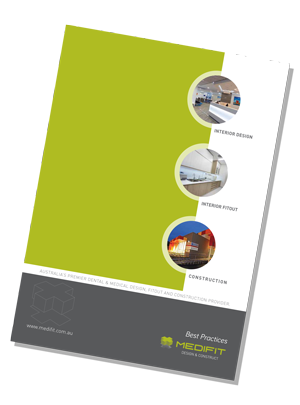Electrical installations in body protected patient areas
By Geoffrey A Raphael
Design Director - Medifit Design & Construct
This article was published in 2004 in Australasian Dental Practice
The construction of premises for use in the delivery of healthcare services not only need to comply with all general building codes, they are also increasingly being governed by specific standards, guidelines and legislation designed to safeguard patients visiting the practice.
Dental practices, in many cases, can by covered by the same rules as medical practices and even hospitals.
One of the key reasons to use specialist design and construction companies when considering building or refitting your practice is that they should be up-to-date with all the current, pending and future requirements. As an example, on June 30, 2003, Australia and New Zealand released an updated electrical standard for Medical and Dental Practices in Australia known as AS3003:2003. The new standard came out of a revision of AS3003 and AS2500 and refers to electrical wiring and circuitry requirements for Medical and Dental treatment rooms and the guidelines for implementation.
There has been much discussion in both countries as to whether this is applicable to general dental treatment rooms or not. The standard at present is a guideline and compliance is purely voluntary unless a regulatory body, be it government or an association, rules to regulate or enforce any of the standards.
To date, the health departments in New South Wales and Western Australia and the Office of the Chief Electrical Inspector in Victoria have indicated that dental practitioners must comply with the new standard. Other states and New Zealand are expected to require similar compliance in the future.
“AS/NZS 3003:2003 applies to the electrical installations in patient areas of hospitals, medical and dental practices and dialyzing locations,” said John Kelly, a Standards Australia Project Manager. “The standard requires that all patient areas be body-protected or cardiac-protected areas. A patient area is defined as a location in which it is intended that low voltage (50-1000V) electrical medical equipment will be used.”
After discussions with two of the committee members of the AS3003 review, it is apparent that this standard has been designed as a blanket standard for many differing health applications where loss of power due to earth leakage has a potential for injury or death. An example of this is a ward or intensive care unit in a hospital where life-sustaining equipment is being used. In this case, the ward does not shut down for cleaning and you can imagine the implications of a cleaner having a vacuum with a electrical fault causing the power failure to part or all of the ward. To reset the Residual Current Device (RCD) trip fuse, someone would have to find the main switchboard, unlock it, find the right circuit breaker and reset it. In this time, the ventilators sustaining lives of three critically ill patients have been sitting idle.
With compliant wiring, this scenario would never happen as the cleaner uses the dedicated power source which is labelled for this use and is wired separately back to the main switch board.
For power outlets to medical equipment, all of the RCD trip devices are integrated into special power outlets that have testing capability and indicator lights. If an RCD is tripped, then resetting can be almost immediate and any faulty equipment can be quickly identified and isolated.
So, from this one scenario, you can start to get an idea of the degree to which these standards may or may not affect your own practice and what your duty of care might be. This is only one of many scenarios this standard addresses.
Whose responsibility is it?
As the owner of the practice, it is your responsibility to comply as required in each state and to then manage the testing compliance as regulated in each state. There is also an onus on the electrician in some states to comply with their electrical authority’s requirements.
Cost-wise, to comply, each treatment room would attract an oncost of approximately $1500 per room or more if done at time of building and up to $2500 or more per room if done retrospectively.
What rooms have to comply?
Given that you have to comply. Any room or area in a practice where patients are treated or consulted and low voltage (50v to 1000v) medical/dental equipment is used within the patient treatment zone. For example:
- Treatment rooms;
- OPG or other radiological patient rooms; and
- Consult room – if low voltage powered diagnostic tools (such as intraoral cameras are used in contact with patients.
Areas such as the office, laboratory, sterilisation room, reception, waiting and plant room typically do not require compliance.
From a regulatory standpoint, in states with regulatory bodies enforcing the standard, the risk could be that you will be issued with an order to comply. Keep in mind that the standard does have a clause stating non-retrospectivity.
One of the main issues here is your duty of care and your exposure to liability. This is an area of potential risk. There is no precedent for any of this, in a legal sense, that we have been able to discover as yet, but in a case of injury to staff, patient or yourself your liability might be related to the compliance and your duty of care.
Our recommendation to all of our clients across Australia and New Zealand is to become compliant as and when a refit or fit out is undertaken and to utilize the expense for surety of a safe work place and treatment rooms.

